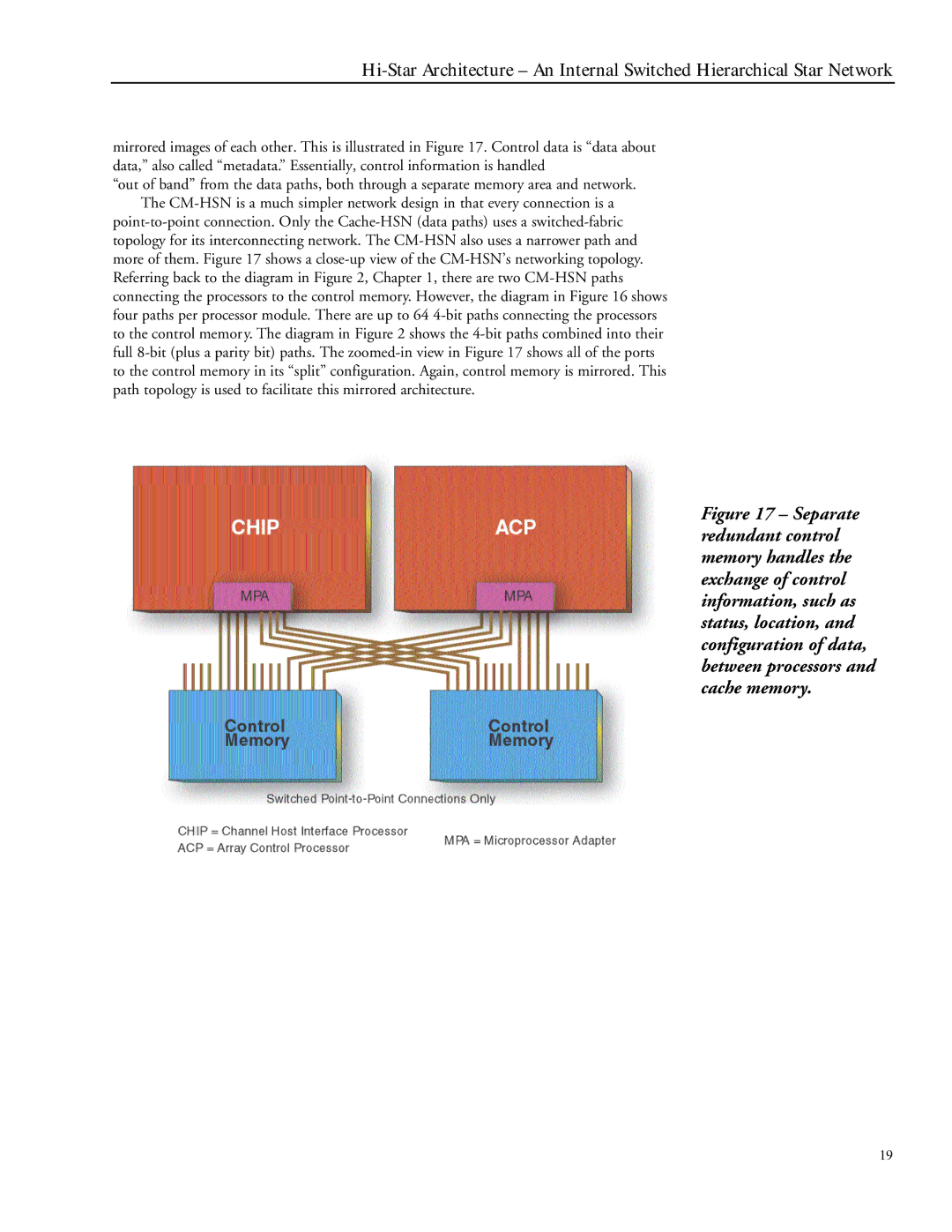
Hi-Star Architecture – An Internal Switched Hierarchical Star Network
mirrored images of each other. This is illustrated in Figure 17. Control data is “data about data,” also called “metadata.” Essentially, control information is handled
“out of band” from the data paths, both through a separate memory area and network. The CM-HSN is a much simpler network design in that every connection is a point-to-point connection. Only the Cache-HSN (data paths) uses a switched-fabric topology for its interconnecting network. The CM-HSN also uses a narrower path and more of them. Figure 17 shows a close-up view of the CM-HSN’s networking topology.
Referring back to the diagram in Figure 2, Chapter 1, there are two CM-HSN paths connecting the processors to the control memory. However, the diagram in Figure 16 shows four paths per processor module. There are up to 64 4-bit paths connecting the processors to the control memory. The diagram in Figure 2 shows the 4-bit paths combined into their full 8-bit (plus a parity bit) paths. The zoomed-in view in Figure 17 shows all of the ports to the control memory in its “split” configuration. Again, control memory is mirrored. This path topology is used to facilitate this mirrored architecture.
Figure 17 – Separate redundant control memory handles the exchange of control information, such as status, location, and configuration of data, between processors and cache memory.

